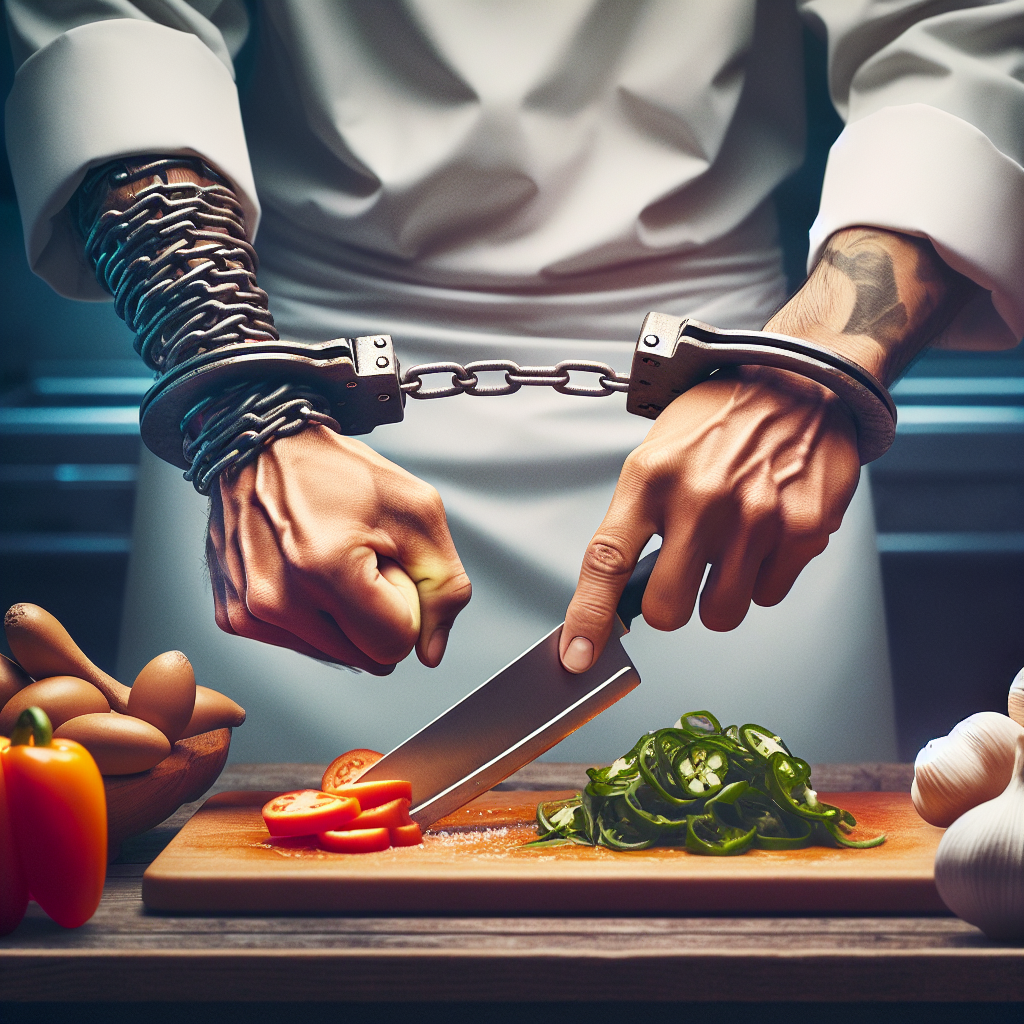Discover the inspiring success story of a former chef prisoner who turned his life around and built a thriving restaurant business. Ali Elreda, a 47-year-old, learned to cook while serving time in prison and now owns and operates a successful restaurant named Fatima’s Grill in Downey, California.
Combining Mediterranean and Mexican-American cuisines, Fatima’s Grill gained popularity through its unique fusion dishes and vibrant flavors. With a strong presence on social media, the restaurant has amassed a loyal following and is expanding to multiple locations across the country. Despite the challenges and setbacks along the way, Elreda remains dedicated to his passion for food and is excited about the prospects of his growing business.
Restaurant Operations
Running a successful restaurant requires careful attention to various aspects of operations. From menu planning to food preparation, beverage selection, and table setting, every detail contributes to the overall dining experience. Let’s explore each of these key areas in more detail.
Menu Planning
Menu planning is a crucial part of any restaurant operation, as it sets the tone for the dining experience. A well-designed menu should offer a variety of options that appeal to different tastes and dietary preferences. It should also take into consideration the availability of ingredients, the target audience, and the overall theme or concept of the restaurant.
Appetizers
Appetizers are the perfect way to kickstart a meal and set the stage for the main course. They should be enticing and flavorful, encouraging guests to explore the rest of the menu. From crispy calamari to delectable bruschetta, a carefully curated selection of appetizers can enhance the dining experience and leave a lasting impression on customers.
Main Courses
The main courses are the heart of any restaurant menu. It is essential to offer a range of options that cater to different palates and dietary needs. Whether it’s succulent steaks, flavorful pasta dishes, or vegetarian specialties, the main courses should showcase the culinary expertise of the kitchen and provide guests with a memorable dining experience.
Desserts
No meal is complete without a sweet treat at the end. Desserts play a vital role in enhancing the overall dining experience. A well-crafted dessert menu should include a variety of options, from classic indulgences like rich chocolate cake to innovative creations like deconstructed fruit tarts. The desserts should be visually appealing and delicious, leaving guests craving for more.
Food Preparation
Food preparation is the backbone of any restaurant operation. It involves a combination of skilled kitchen staff, cooking techniques, and strict adherence to food safety and hygiene standards. The quality of food preparation directly impacts the taste, presentation, and overall satisfaction of the guests.
Cooking tips from Famous Chefs
Kitchen Staff
A skilled and well-trained kitchen staff is essential for efficient and effective food preparation. From the chefs to the line cooks and kitchen assistants, each member plays a vital role in ensuring that the food is prepared to perfection. Proper training, organization, and communication are crucial to maintaining a smooth workflow and delivering high-quality dishes to guests.
Cooking Techniques
The use of various cooking techniques adds depth and flavor to dishes. Whether it’s grilling, sautéing, roasting, or baking, each technique brings out unique qualities in the ingredients. The kitchen staff should have a thorough understanding of these techniques and know how to apply them to different ingredients and dishes to achieve optimal results.
Food Safety and Hygiene
Maintaining proper food safety and hygiene practices is non-negotiable in the restaurant industry. From storing ingredients at the right temperature to preventing cross-contamination and following strict hygiene protocols, every step of the food preparation process should prioritize the safety and well-being of the guests. Regular inspections, training, and continuous monitoring are essential to ensure compliance with health and safety regulations.
Beverage Selection
The beverage selection of a restaurant can greatly enhance the dining experience. Whether it’s alcoholic beverages to complement the meal or non-alcoholic options for those who prefer them, a well-curated beverage menu can elevate the overall enjoyment of the guests.
Cooking tips from Famous Chefs
Alcoholic Beverages
Alcoholic beverages, such as wines, beers, and cocktails, should be carefully selected to complement the flavors of the food. A diverse range of options should be available, catering to different preferences and budgets. Whether it’s a rich red wine, a refreshing craft beer, or a handcrafted cocktail, the alcoholic beverage selection should enhance the overall dining experience and leave guests satisfied.
Non-Alcoholic Beverages
Non-alcoholic beverages are equally important for guests who prefer not to consume alcohol or for those looking for refreshing options. From mocktails and smoothies to specialty teas and infused waters, the non-alcoholic beverage selection should provide a variety of choices that are both delicious and visually appealing. It’s important to consider the dietary needs and preferences of guests, offering options for those with allergies or specific dietary restrictions.
Table Setting and Decor
The table setting and decor of a restaurant contribute to the ambiance and overall dining experience. A well-thought-out design and attention to detail can create a welcoming and visually appealing environment for guests to enjoy their meals.
Tableware
The choice of tableware, including plates, glasses, and cutlery, should reflect the theme or concept of the restaurant. From elegant fine dining establishments to trendy casual eateries, the tableware should be consistent with the overall atmosphere and enhance the presentation of the dishes. Clean and well-maintained tableware is essential for a positive dining experience.
Cooking tips from Famous Chefs
Ambiance and Lighting
The ambiance and lighting of a restaurant can significantly impact the mood and atmosphere. Whether it’s dim lighting for a cozy and intimate setting or bright lighting for a lively and energetic vibe, the lighting should be carefully chosen to create the desired ambiance. The decor, including colors, textures, and furnishings, should be cohesive with the overall theme and style of the restaurant, providing a visually pleasing environment for guests to dine in.
In conclusion, running a successful restaurant requires meticulous attention to every aspect of operations. From crafting a well-thought-out menu to ensuring the highest standards of food preparation, beverage selection, and table setting, every detail contributes to creating an exceptional dining experience for guests. By focusing on these key areas, restaurant owners can set themselves up for success and build a loyal base of satisfied customers.
Happy Cooking!


